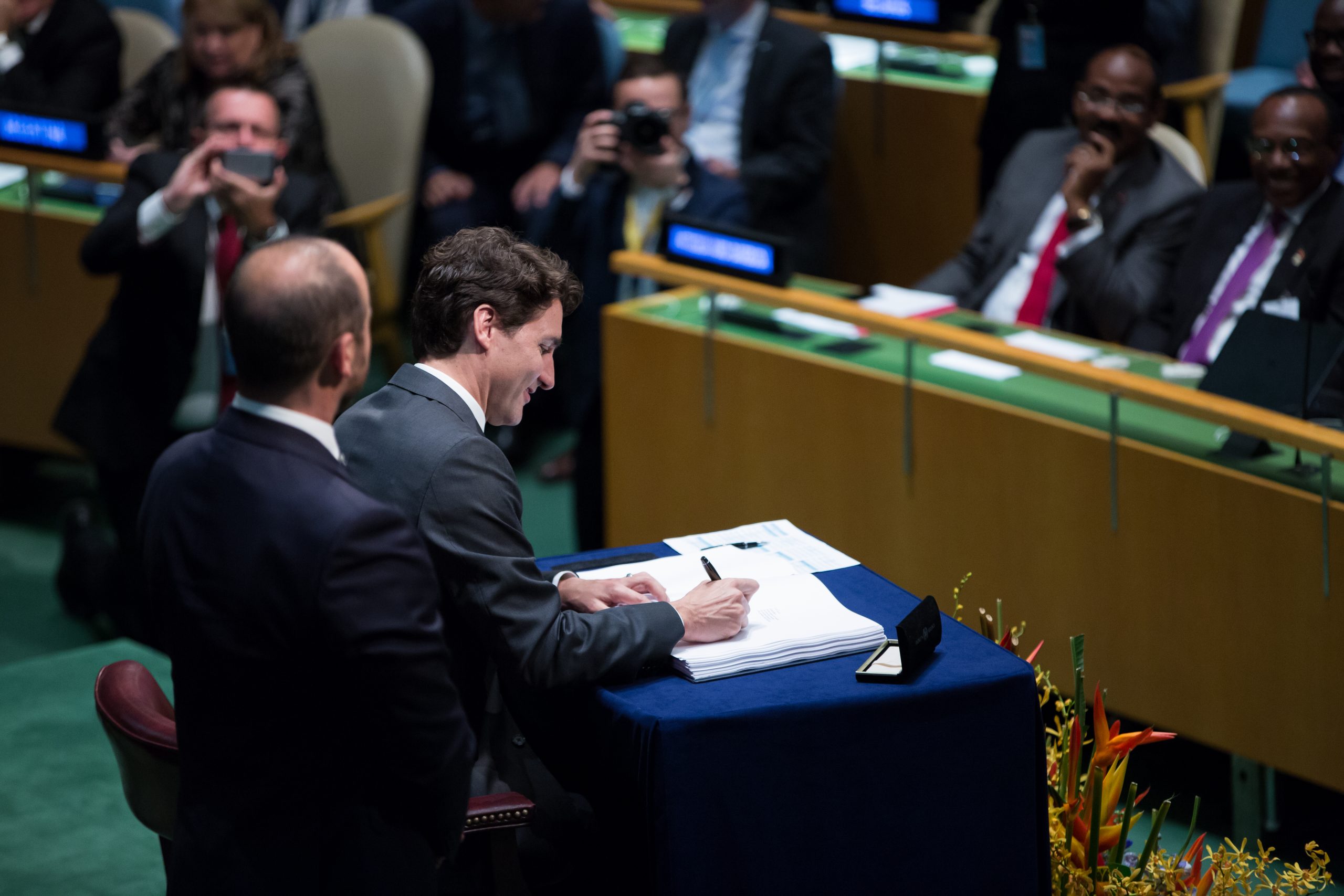International Mitigation & Adaptation Initiatives
The international community is addressing climate change through multiple bodies, including the United Nations Environmental Program and the United Nations Framework Convention on Climate Change (UNFCCC) secretariat. Examples of mitigation and adaptation initiatives created by the UN include:
United Nations Framework Convention on Climate Change (UNFCCC)
Established in 1994, the UNFCCC aimed to reduce GHG emissions to a level that would allow for earth’s ecosystems to better adapt to the changing climate and emphasized global sustainable economic development.19 Two key amendments to the UNFCCC include the Kyoto Protocol and the Doha Amendment. The Kyoto Protocol operationalizes the UNFCCC by outlining GHG emission reduction targets for industrialized countries. Canada, for example, committed to a 6% reduction in emissions from 1990 baseline levels for the first period (2008-2012).20 The Kyoto Protocol entered into force in 2005, with 192 nations ratifying Canada signed the Protocol in 2002, however it withdrew in 2011 under Prime Minister Stephen Harper for fear of having to pay billions for not achieving targets.21 The Doha Amendment included an updated commitment to the Kyoto protocol of an 18% reduction in GHG emissions from 1990 levels for its second period (2013-2020), added nitrogen trifluoride to the list of GHGs, and facilitated more unilateral strengthening of commitments by individual signatories.22 The Doha Amendment was adopted in 2012, however, Canada again was not a signatory.23
The Paris Agreement

The Paris Agreement was reached in 2015 and builds upon the UNFCCC, with the aim of keeping anthropogenic GHG emissions at a level that prevents harmful changes to the climate.24 The Agreement was signed by Canada under the Liberal government, which followed a period of little environmental action under the Conservative government. The specific targets set by the agreement were to limit global temperature increases to less than 1.5° Celsius above pre-industrial levels as well as to increase the capacity for nations to adapt to climate change’s impacts.24 Mechanisms to support nations in achieving these goals include increasing transparency structures, generating appropriate financial flows as well as technology frameworks, and enhancing support for developing countries.24 The Agreement also includes Nationally Determined Contributions (NDCs) whereby each nation identifies its most ambitious efforts to fulfill the Agreement, and reports on them every five years. Each consecutive NDC is more ambitious than the previous one. Canada’s commitments under the Paris Agreement include:
- Reducing GHG emissions to 30% below 2005 levels by 2030
- Aiming for net zero emissions by 2050
- Pledging $2.65 billion CAD in climate financing over five years to support climate action in developing countries24
Thea de Paoli discusses who’s missing from the climate decision-making table, particularly at COP27 (0:56)
The Organization for Economic Co-operation and Development (OECD): Climate Policy and Carbon Tax Instruments
Taxing GHG emissions, often referred to as a “carbon tax”, is an economic incentive designed to mitigate climate change growing in popularity among nations and international organizations. Taxes and tradable permit systems have been found to be an efficient way to encourage corporations and countries to lower their emissions. The OECD’s projects concerning the interactions between taxation and the environment investigate the ways in which these emissions taxes and tradable permit systems may help with climate change mitigation strategies and policy.25
OECD’s Policy Instruments for the Environment (PINE)
The OECD’s PINE database includes detailed information on qualitative and quantitative data concerning environmental policy tools such as taxes, fees, charges, and subsidies. The database includes policies from 90 OECD member and non-member countries, and allows for detailed comparisons between the policy instruments used by different nations.25 This database is a useful tool for researchers and policymakers seeking to compare the practicality and efficacy of different emissions taxation models for various contexts.
OECD’s Green Recovery in the Time of COVID-19
The OECD has released a list of 25 climate actions that it believes must be adopted to keep our planet on track to meet 2025 climate targets. These are based on OECD findings from the five sectors that produce the most emissions: agriculture, building infrastructure, transport, energy, and industry, as well as the five most effective policy instruments: investing, regulating, taxes and subsidies, informing and educating, and leading by example. The OECD has identified COVID-19 and its subsequent governance disruptions as a unique opportunity for governments to implement green recovery plans and has encouraged governments to consider implementing the 25 climate actions in their green reforms.25
In the last couple of years, as countries have begun their recovery from the COVID-19 pandemic, many nations have allocated billions of dollars to investing in green measures. According to the OECD Green Recovery Database, between September 2021 and April 2022, funds investing in environmentally positive measures increased from USD 667 billion to USD 1 090 billion, which makes up almost 33% of recovery spending since the beginning of the pandemic.26 Spending on measures with mixed and negative climate impacts, however, has also increased from USD 163 to USD 290 billion, and from USD 156 to USD 178 billion, respectively.26 Further, the OECD estimates that government spending supporting measures with negative environmental impacts in the form of subsidies, such as fossil fuel production and harmful agricultural practices, will soon surpass spending on green measures. In order to prevent this, governments must be encouraged to refrain from scaling back on green recovery plans in the face of economic and political pressures as well as to invest more in innovation and building adaptive capacity.
Alex Bland discusses global climate decision-making meetings like COP and the pros and cons of this traditional approach (2:19)

